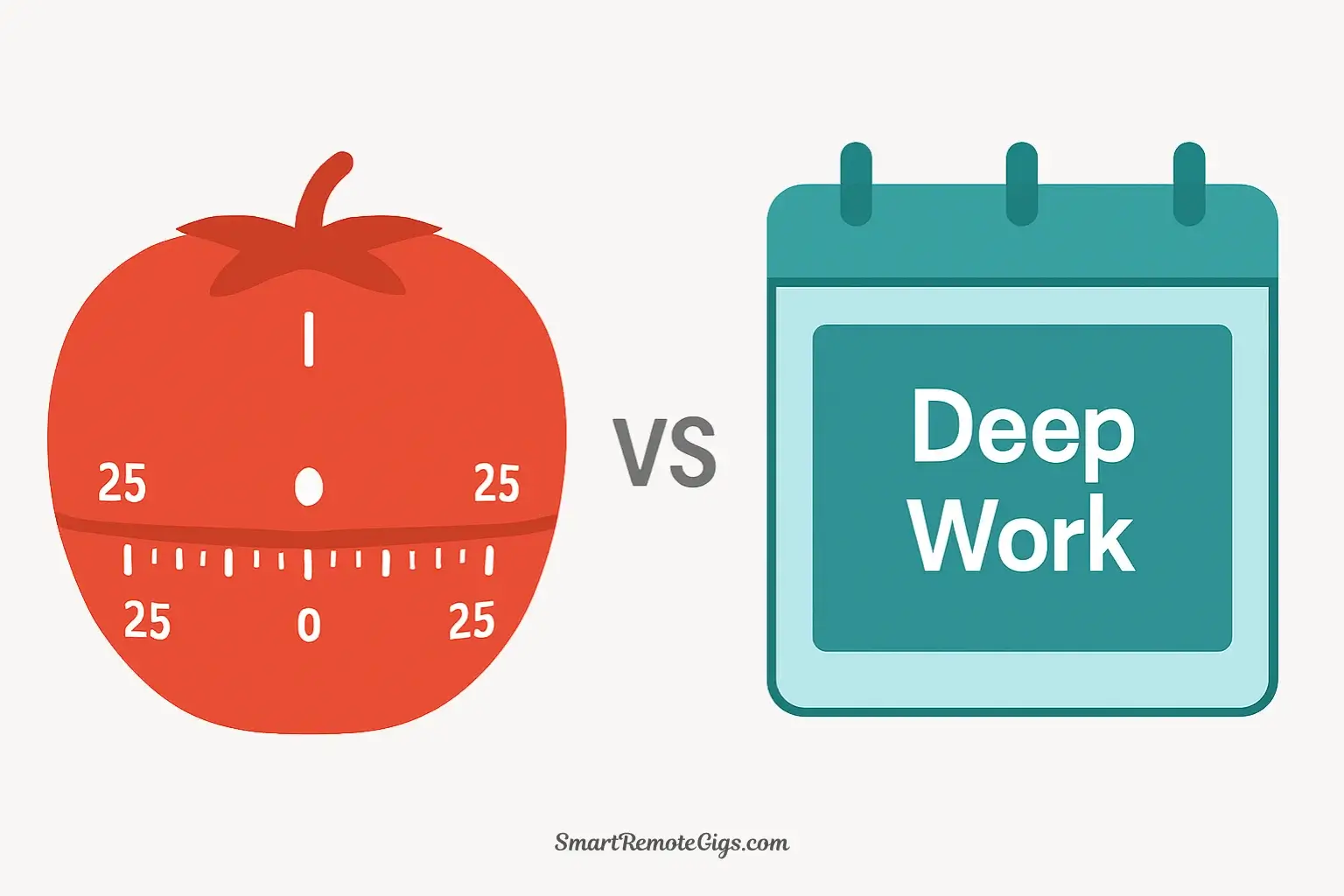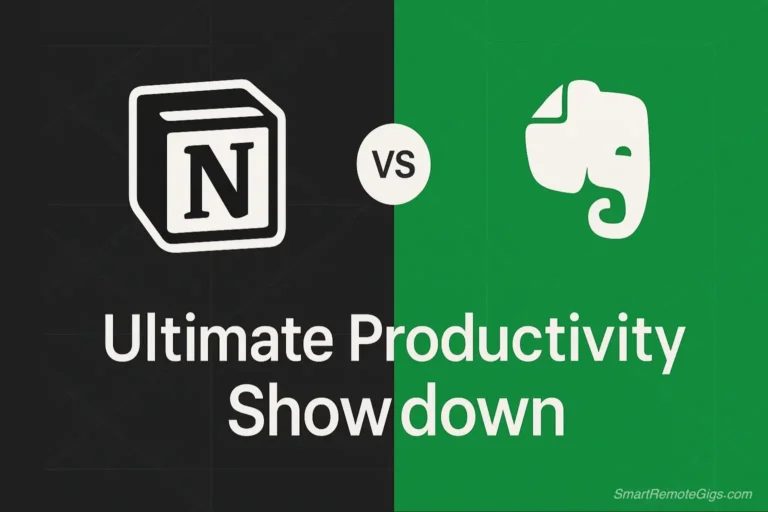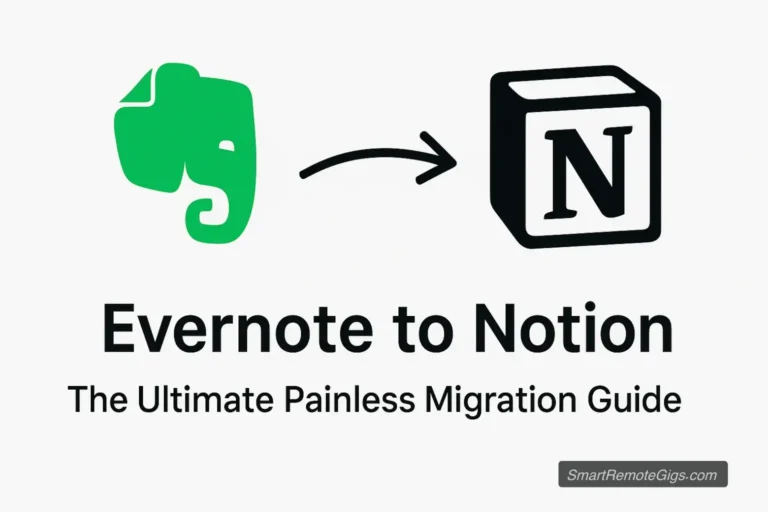You’ve heard about the Pomodoro Technique. You’ve read about time blocking. Both promise better focus, higher productivity, and more accomplished work. But when you sit down to actually structure your day, you face a question: Which method should you use?
Should you break your work into 25-minute sprints with frequent breaks? Or should you block out large chunks of time for uninterrupted deep work? Can you use both? And which approach is actually better for the kind of complex, creative work you do?
If you’ve been confused about the difference between these two popular productivity methods, you’re not alone. The internet is full of articles praising each technique, but few explain when to use which method—or how they can work together.
This guide will give you a clear, practical answer. By the end, you’ll understand exactly what each method does, when to use each one, and how to combine them into a personalized focus system that matches your work style and goals.
The Quick Answer: A Micro-Method vs. a Macro-Strategy
Before we dive deep, here’s the essential distinction:
The Pomodoro Technique is a micro-level focus method. It structures how you work within a work session by breaking it into timed sprints with mandatory breaks.
Time blocking is a macro-level scheduling strategy. It structures your entire day by assigning specific time blocks to specific types of work.
Think of it this way: Time blocking is your game plan—it decides what you’ll work on and when. The Pomodoro Technique is your pacing strategy—it decides how you’ll approach that work once you’re in the session.
They operate at different levels, which means they’re not actually competing methods. They’re complementary tools that can work beautifully together.
But to understand when to use each (and how to combine them), you need to understand what each method actually does.
What is the Pomodoro Technique? (A 60-Second Refresher)
The Pomodoro Technique was created by Francesco Cirillo in the late 1980s as a time management method designed to improve focus and productivity. The technique gets its name from the tomato-shaped kitchen timer (pomodoro means “tomato” in Italian) that Cirillo used as a university student.
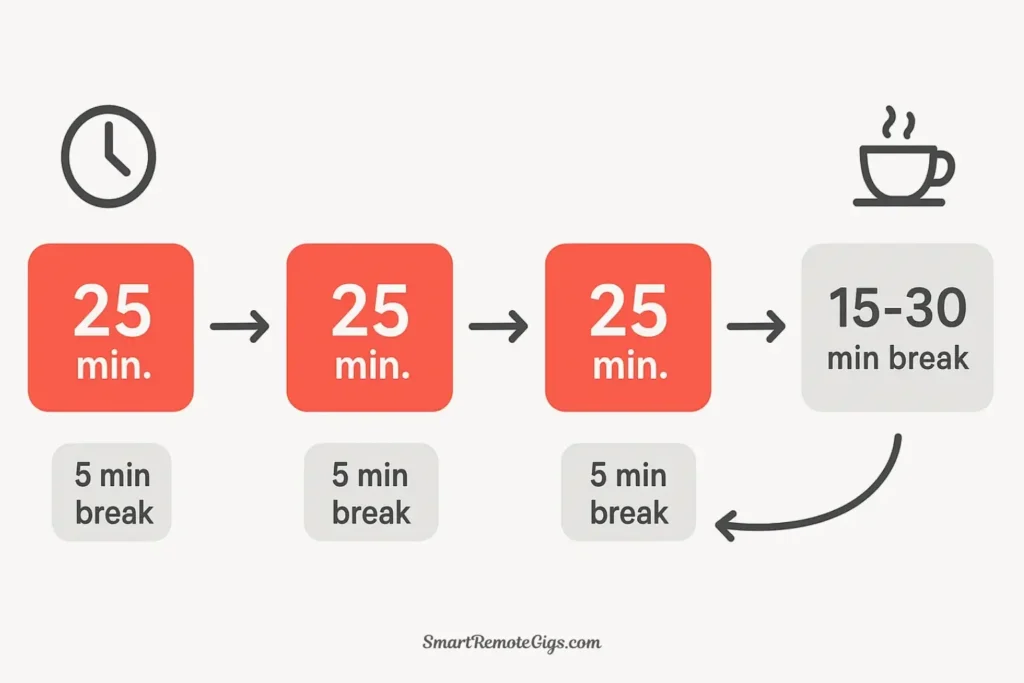
The Basic Process:
- Choose a task to work on
- Set a timer for 25 minutes (one “Pomodoro”)
- Work on the task with complete focus until the timer rings
- Take a 5-minute break
- Repeat for four Pomodoros
- After the fourth Pomodoro, take a longer break (15-30 minutes)
The Core Philosophy:
The Pomodoro Technique is built on several key principles:
- Fixed time intervals create urgency and prevent procrastination
- Mandatory breaks prevent mental fatigue and maintain consistent energy
- Single-tasking during each Pomodoro eliminates multitasking
- Tracking Pomodoros creates awareness of how long tasks actually take
The 25-minute duration isn’t arbitrary—it’s designed to be long enough to make meaningful progress but short enough that you can maintain intense focus without mental fatigue. The frequent breaks prevent the attention decline that naturally occurs during extended focus sessions.
For more information about the original technique, visit the official Pomodoro Technique website.
What the Pomodoro Technique Excels At:
- Creating immediate focus when you’re struggling to start
- Maintaining energy and attention during repetitive or tedious tasks
- Building awareness of how long tasks actually require
- Preventing burnout during long work sessions
- Creating a sense of progress and momentum through completed intervals
What is Time Blocking? (And How It’s Different)
Time blocking is a calendar management strategy where you divide your day into distinct blocks of time, with each block dedicated to a specific task or type of work. Instead of working from a to-do list and choosing tasks reactively, you proactively schedule when each task will happen.
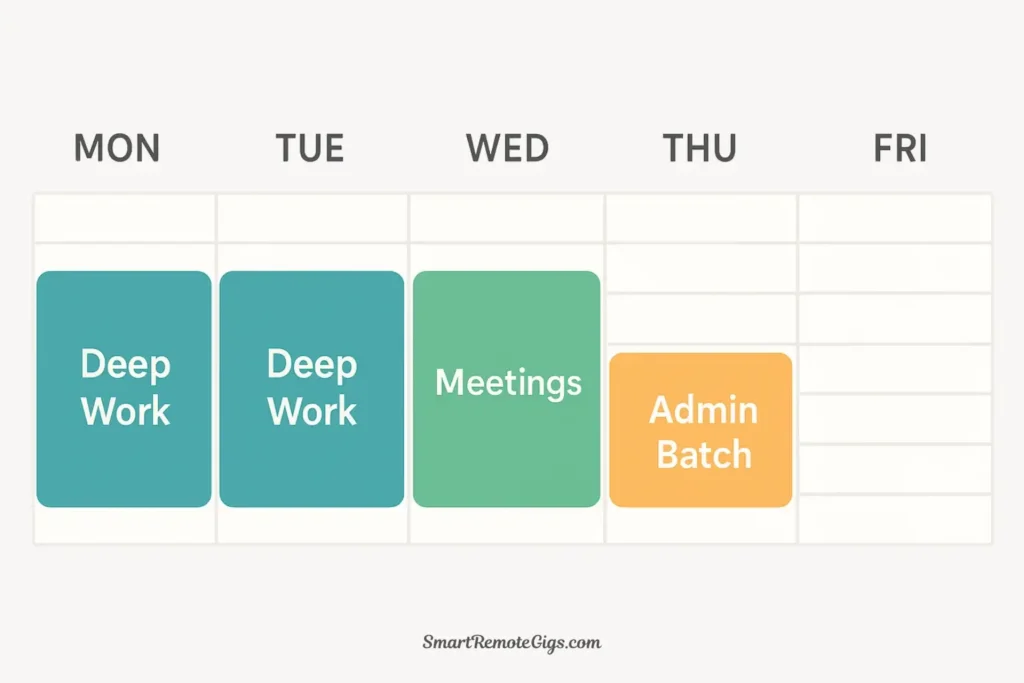
The Basic Process:
- Review all your tasks and responsibilities for the week
- Estimate how long each task or project will require
- Schedule specific blocks of time in your calendar for each task
- Treat these blocks as seriously as you would client meetings
- During each block, work only on the assigned task or project
- Adjust your calendar as needed, but always work from scheduled blocks
The Core Philosophy:
Time blocking is built on fundamentally different principles than Pomodoro:
- Intentional scheduling prevents reactive, distraction-driven work
- Protected time ensures important work actually gets done
- Context preservation by grouping similar work together
- Realistic planning by forcing you to confront time constraints
- Boundary setting that prevents minor tasks from consuming your day
Time blocking creates what psychologists call “implementation intentions”—specific plans about when and where you’ll complete tasks. Research shows that implementation intentions dramatically increase the likelihood of actually completing intended behaviors.
What Time Blocking Excels At:
- Protecting large blocks of uninterrupted time for complex projects
- Preventing shallow work from crowding out important deep work
- Creating structure and routine in your workday
- Eliminating decision fatigue about what to work on next
- Ensuring all important tasks get scheduled attention
For a complete implementation guide, see our detailed article on how to time block your workday effectively.
The Head-to-Head Comparison
To understand when to use each method, let’s compare them directly across key dimensions:
| Feature | Pomodoro Technique | Time Blocking |
|---|---|---|
| Time Scale | Micro (25-min intervals) | Macro (60-180 min blocks) |
| Primary Goal | Maintain focus & energy | Protect time for important work |
| Structure Level | Within work sessions | Across entire day/week |
| Break Frequency | Every 25 minutes (mandatory) | Flexible (when block ends) |
| Best For | Repetitive tasks, studying, writing | Creative projects, strategic work, deep analysis |
| Flexibility | Highly flexible, easy to adapt | Less flexible by design (commitment to blocks) |
| Mental Energy Management | Prevents fatigue through breaks | Leverages peak energy for important work |
| Planning Required | Minimal (choose task, start timer) | Significant (requires calendar planning) |
| Interruption Handling | Strict rules (void current Pomodoro) | More forgiving (reschedule block) |
| Tracking Focus | Counts completed Pomodoros | Measures blocked vs. actual time used |
| Startup Overhead | Very low (just set timer) | Medium (requires advance scheduling) |
| Learning Curve | Shallow (learn in 5 minutes) | Moderate (requires practice to optimize) |
| Ideal User | Anyone struggling with focus or procrastination | People with complex schedules and competing priorities |
| Typical Use Case | “I need to focus on this task right now” | “I need to ensure this project gets 3 hours this week” |
Key Insight from the Comparison:
Notice that the Pomodoro Technique answers the question “How should I work right now?” while time blocking answers “What should I work on, and when?”
This reveals why they’re not actually competitors—they solve different problems at different levels of your productivity system.
When to Use Each Method
Understanding the differences is helpful, but you need clear guidance on which method to use for your actual work. Here’s the decision framework:
Use the Pomodoro Technique When:
- You’re struggling to start a task – The commitment of “just 25 minutes” lowers psychological resistance and makes starting feel manageable.
- The task is repetitive or tedious – When you’re in a task batching session for email or admin work, using Pomodoros can keep you focused and prevent the fatigue of monotonous work.
- You’re learning new material – The Pomodoro structure matches research on optimal study intervals. 25 minutes of focused study followed by breaks aids retention.
- You need to maintain consistent energy – If you’re working on a project that will take 3-4 hours, Pomodoros prevent the attention decline that naturally occurs during extended sessions.
- You’re prone to getting “stuck” in work – The mandatory breaks prevent you from going down rabbit holes or perfectionist spirals.
- You need to build focus stamina – If you currently struggle to focus for more than 10 minutes, Pomodoros are training wheels that gradually build your concentration capacity.
Use Time Blocking When:
- You have complex, competing priorities – Time blocking ensures your most important work actually gets scheduled time rather than being perpetually pushed aside by urgent but less important tasks.
- You need extended, uninterrupted focus – Deep creative work, strategic planning, and complex problem-solving often require 2-3 hours of uninterrupted time to reach flow states.
- Your day is chaotic and reactive – Time blocking creates structure and protects you from spending entire days responding to others’ priorities.
- You want to batch similar tasks – Time blocking allows you to group similar work (all meetings on Tuesday afternoon, all writing on Wednesday morning) to reduce context switching.
- You need to say “no” effectively – When someone asks for your time, you can truthfully say “I have this time blocked for a client project, but I have availability on Thursday at 2 PM.”
- You’re not getting to important-but-not-urgent work – Strategic projects, learning, and long-term thinking require protected time blocks or they’ll never happen.
The Ultimate Productivity Hack: Using Pomodoro Inside Your Time Blocks
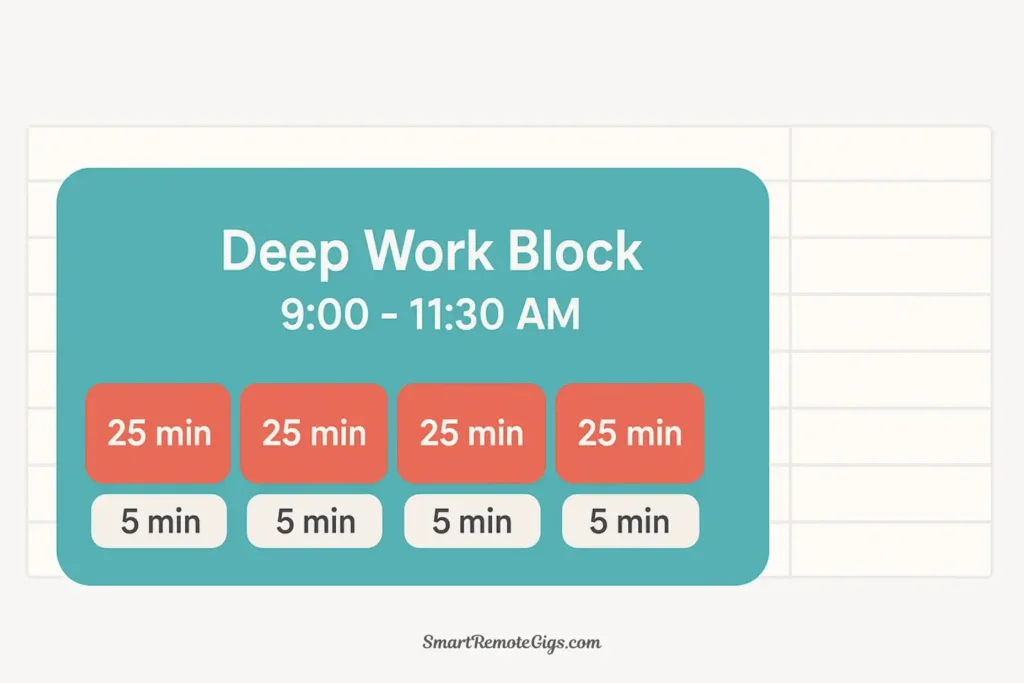
Here’s where these methods become truly powerful: you can use the Pomodoro Technique within your time-blocked sessions.
This hybrid approach combines the macro-level planning of time blocking with the micro-level focus structure of Pomodoro. It gives you the best of both worlds.
How the Hybrid System Works:
Step 1: Time Block Your Day (Macro Level)
Start with time blocking as your foundation:
Monday Schedule:
9:00-11:30 AM: Deep Work Block - Write blog post
11:30-12:00 PM: Communications Block - Email and Slack
12:00-1:00 PM: Lunch
1:00-3:00 PM: Client Work Block - Design project for Client A
3:00-4:00 PM: Administrative Block - Invoicing and planningStep 2: Apply Pomodoro Within Deep Work Blocks (Micro Level)
During your Deep Work Block (9:00-11:30 AM), use Pomodoros to structure your focus:
- 9:00-9:25: Pomodoro 1 – Outline blog post structure
- 9:25-9:30: Break
- 9:30-9:55: Pomodoro 2 – Write introduction and first section
- 9:55-10:00: Break
- 10:00-10:25: Pomodoro 3 – Write remaining sections
- 10:25-10:30: Break
- 10:30-10:55: Pomodoro 4 – Edit and refine
- 10:55-11:15: Extended break
- 11:15-11:30: Final review and formatting
Why This Hybrid Approach Works:
- Time blocking ensures the work gets scheduled – You’ve protected 2.5 hours for the blog post, so it won’t get pushed aside by less important tasks.
- Pomodoros maintain focus during the block – The 25-minute intervals keep you focused and prevent attention drift during the extended work session.
- Breaks prevent fatigue without losing time – Regular breaks keep your mental energy high throughout the entire 2.5-hour block.
- You maintain both structure and flexibility – The time block is committed, but you can adjust how you use Pomodoros within it based on the work’s needs.
When to Skip Pomodoros Within Time Blocks:
Don’t force Pomodoros into every time block. Skip them when:
- You’ve entered a genuine flow state and breaks would be disruptive
- The work naturally has built-in breaks (meetings have scheduled ends)
- You’re doing batch processing that benefits from continuous momentum
- The time block is short (30-45 minutes) and doesn’t need subdivision
The key is using Pomodoros as a tool when they’re helpful, not as a rigid rule that must always be followed.
Understanding this hybrid approach shows why comparing time blocking vs task batching reveals complementary systems rather than competing methods.
The Verdict: When to Use Each Method
After comparing both methods and exploring how they work together, here’s the practical guidance you need:
Choose Pomodoro Technique as Your Primary Method If:
- You’re a student or learner working through material
- You struggle with procrastination and starting tasks
- Your work consists mainly of discrete, completable tasks
- You work better with frequent breaks and variety
- You want a simple system you can start using immediately
Choose Time Blocking as Your Primary Method If:
- You manage complex projects with multiple components
- You have many competing priorities and responsibilities
- You need to protect time for deep, creative work
- Your schedule involves meetings, calls, and collaborative work
- You want control over your calendar and boundaries around your time
Use Both Methods Together (Recommended) If:
- You want the most comprehensive productivity system
- Your work includes both deep focus work and routine tasks
- You’re serious about maximizing your effectiveness
- You’re willing to invest time in planning and structure
- You want the flexibility to adapt your approach to different types of work
The Real Answer:
For most knowledge workers, entrepreneurs, and creative professionals, the optimal approach is time blocking for structure + Pomodoro for focus.
Start with time blocking to create the architecture of your day. Then apply Pomodoro within your deep work blocks when you need help maintaining focus or managing energy.
This gives you:
- Macro-level protection for important work (time blocking)
- Micro-level focus maintenance during that work (Pomodoro)
- The flexibility to adapt based on the work’s nature
- A complete system that addresses both planning and execution
Conclusion: Building Your Personalized Focus System
The question isn’t “Pomodoro vs. time blocking?” The question is “How do I combine these methods to match my work and personality?”
Some people thrive with strict Pomodoro intervals throughout their day. Others prefer long, unstructured time blocks where they work until natural stopping points. Most benefit from a flexible hybrid approach that adapts to different types of work.
Your Action Plan:
Week 1: Start with Time Blocking
- Review your typical week and identify your most important work
- Schedule 2-3 deep work blocks this week for that important work
- Protect those blocks as if they were critical meetings
- Notice: Does this improve what you actually accomplish?
Week 2: Add Pomodoro to One Block
- Choose one deep work block that feels difficult to maintain focus
- Use Pomodoros (25 min work / 5 min break) throughout that block
- Notice: Does the structure help or hinder your focus?
Week 3: Refine Your System
- Keep time blocking for all important work (this is non-negotiable)
- Add Pomodoros to blocks where they help, skip them where they don’t
- Adjust your approach based on energy levels, task complexity, and personal preference
By Week 4, you’ll have a personalized focus system that combines the strategic protection of time blocking with the tactical focus support of Pomodoro—customized to your actual work and needs.
Neither method is “better.” They’re tools. The best productivity system is the one you’ll actually use consistently. Start simple, experiment with both approaches, and build the system that works for your brain and your work.
Ready to eliminate the context switching that makes focus so difficult in the first place? Learn about what context switching is and how it’s killing your productivity.
This comparison is part of our complete productivity framework. For more strategies to optimize your focus and time management, explore our comprehensive guide on creating a hybrid time blocking and task batching system.
A Comparison of Pomodoro and Time Blocking Methods
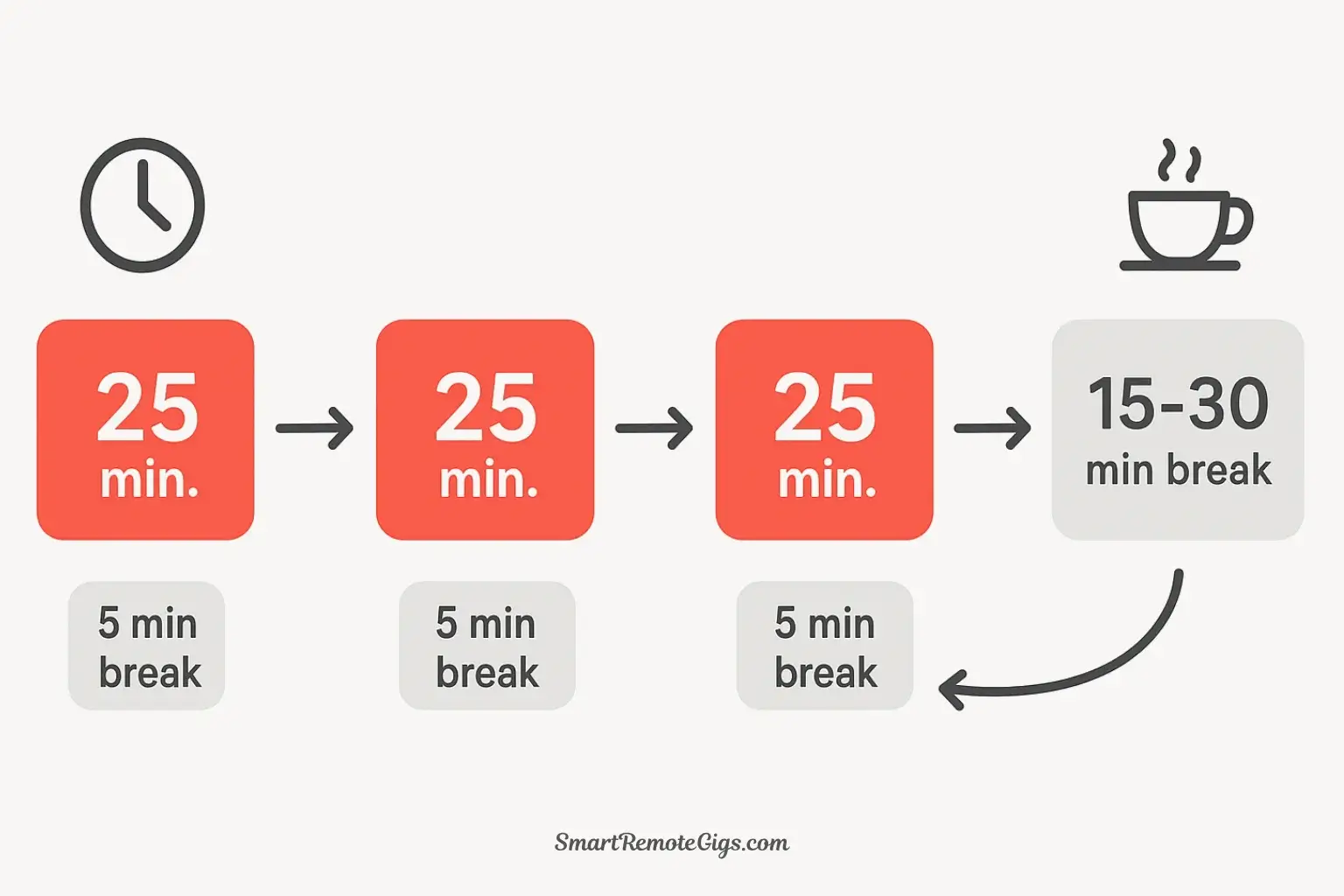
The Pomodoro Technique
A micro-level time management method that uses 25-minute focused sprints with short breaks to maintain energy and prevent procrastination.
Excellent for starting tasks, managing energy during repetitive work, and building focus stamina. Less ideal for protecting large blocks of deep work time.
Editor's Rating:
Price: Free
Visit Website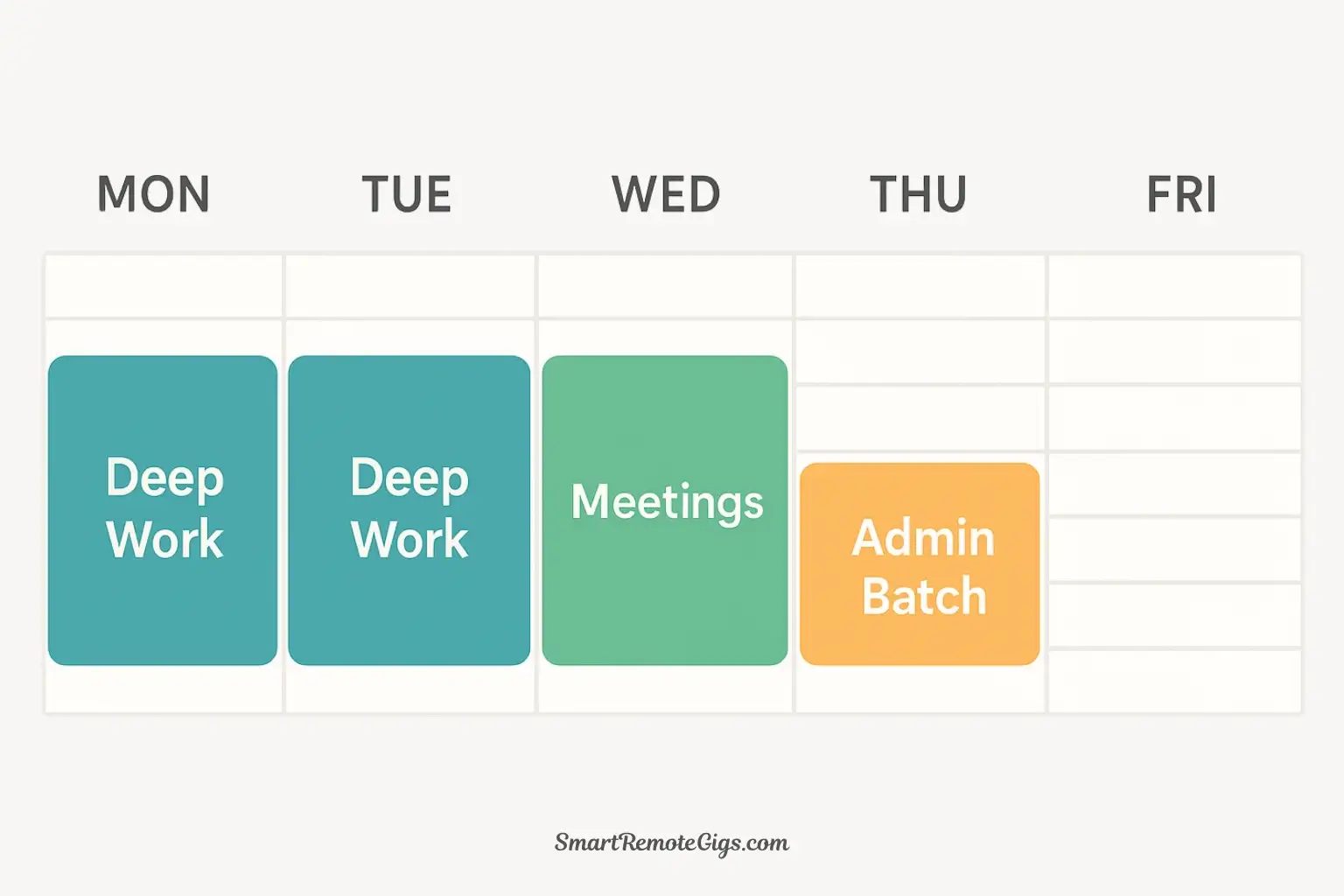
Time Blocking
A macro-level calendar management strategy where you schedule specific blocks of time for dedicated tasks, protecting important work from distractions.
Ideal for structuring a complex week and protecting deep work time. Can feel too rigid if not implemented with flexibility.
Editor's Rating:
Price: Free
Visit Website